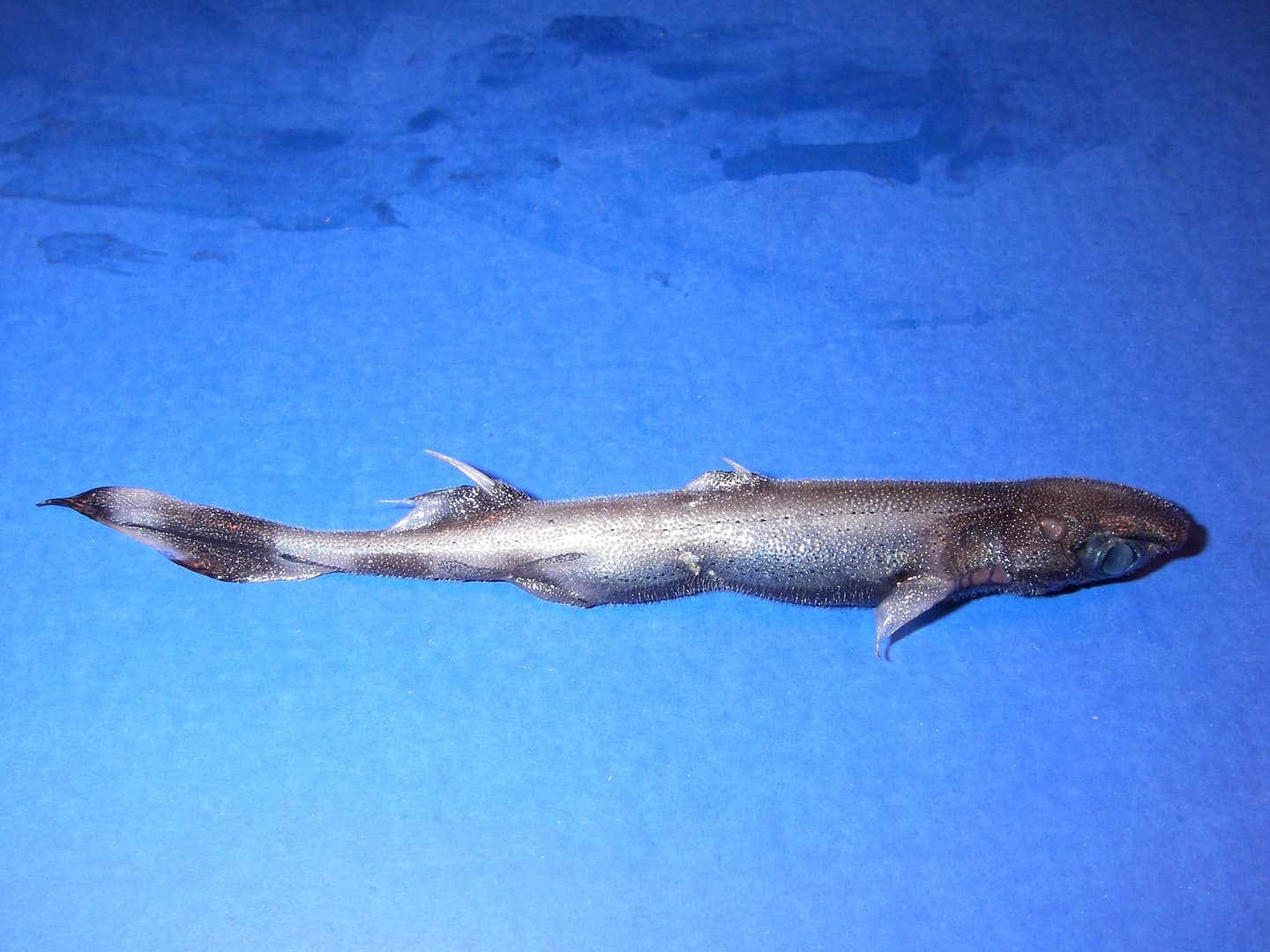
Many sharks have a large, characteristic dorsal fin used for balance. The shark’s fins give it stability and balance in the water. Like humans, some shark species change their teeth to suit their changing diet as they age. Sharp serrated teeth, such as those seen in Great White sharks, are perfect for devouring large prey, such as seals. Other sharks have flat, crushing teeth that are used for crushing shellfish. Some sharks are filter feeders with rows of tiny teeth that the creature uses to eat small fish, jellyfish, and invertebrates. Sharks are born with a set of fully-functional teeth that are constantly replaced approximately every two weeks throughout the animal’s life. Only blue light penetrates the ocean depths where the sharks live, and it’s thought that the green bio-fluorescence helps to protect the sharks against attack by certain species of bacteria. However, when placed under blue light, the sharks fluoresce bright green!

The sharks both appear unremarkable at first glance, being various shades of dull brown. Swell sharks and Chain catsharks live in the deep, dark waters of the eastern Pacific and western Atlantic, respectively.

The increased surface area of the intestine slows the passage of food, speeding up the rate at which nutrients are absorbed into the animal’s blood. A shark’s intestines are compact and short, with a surface area that’s increased by coils and internal valves in many forms.


 0 kommentar(er)
0 kommentar(er)
